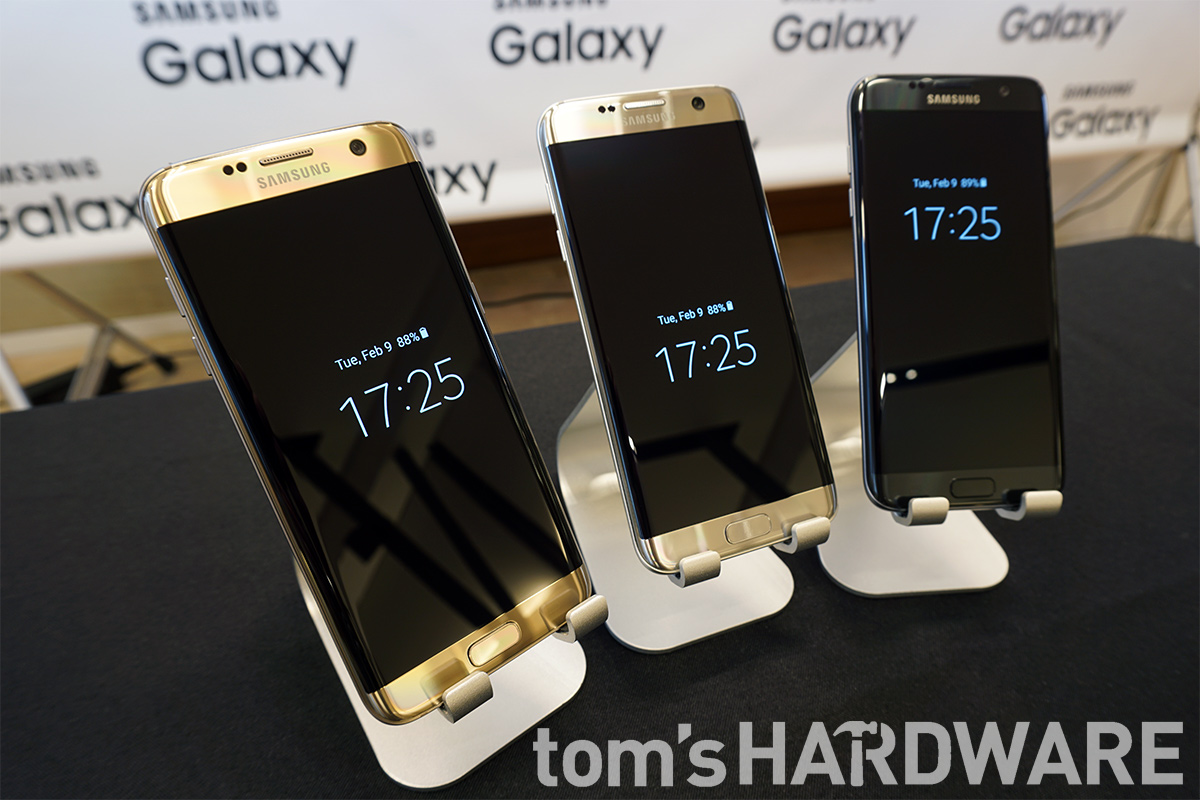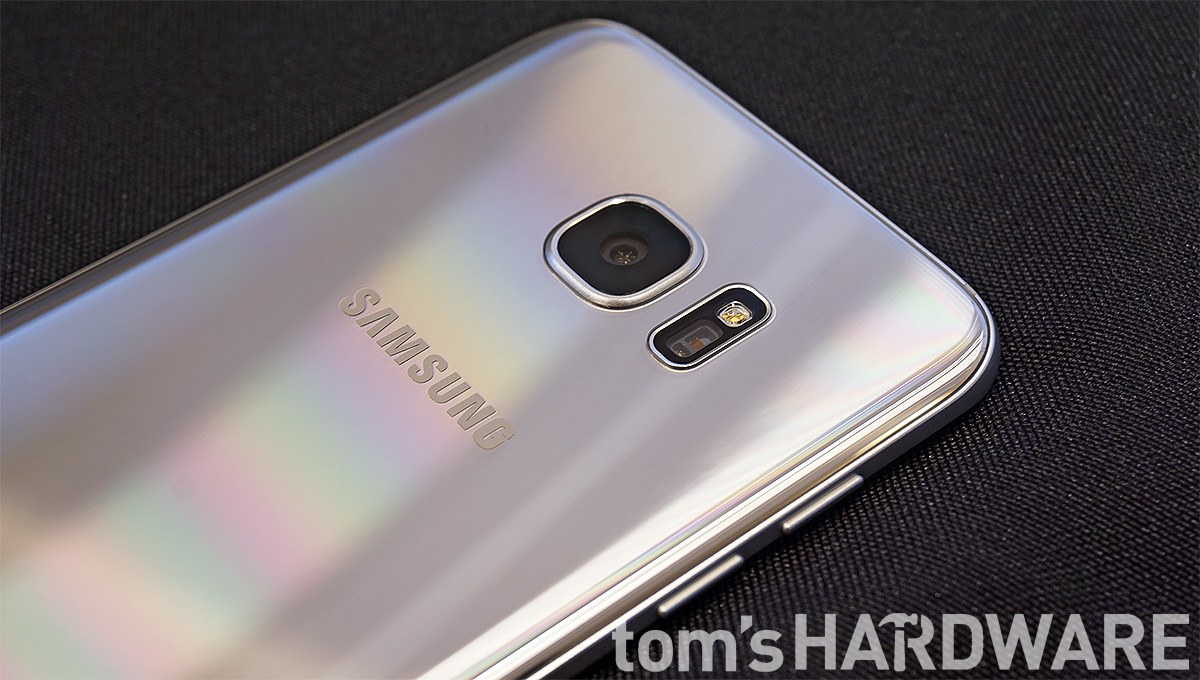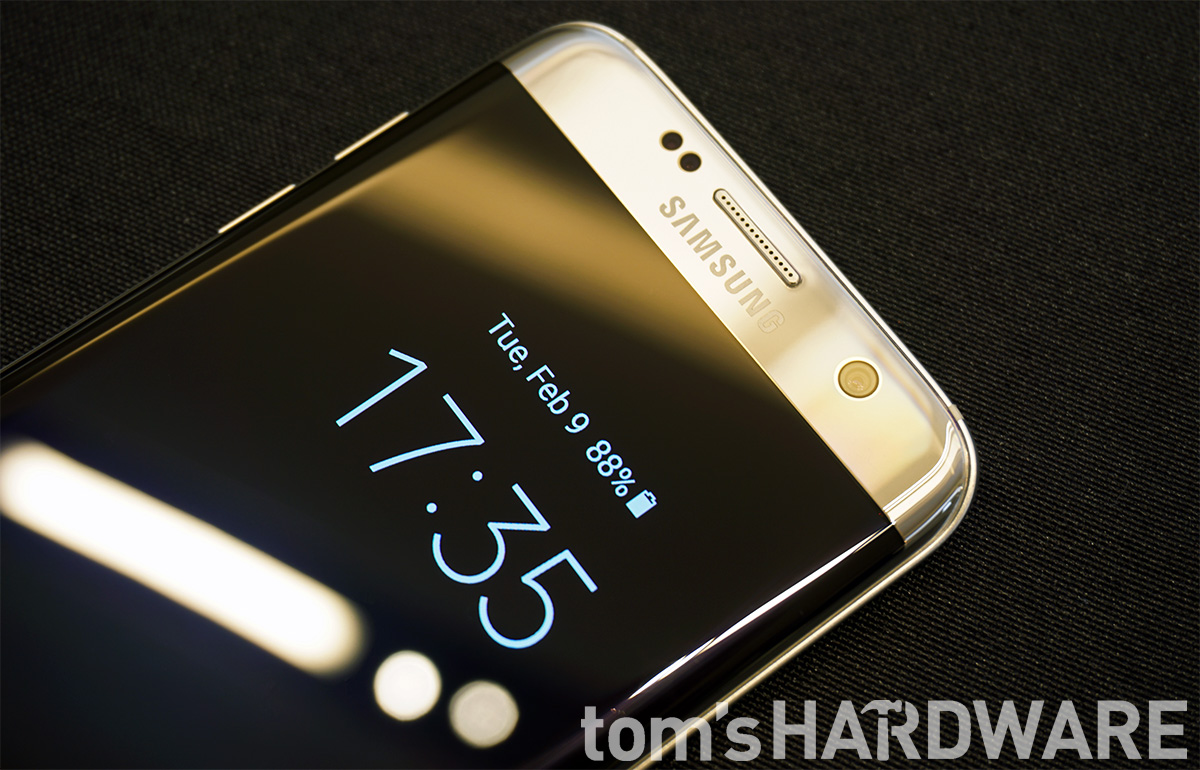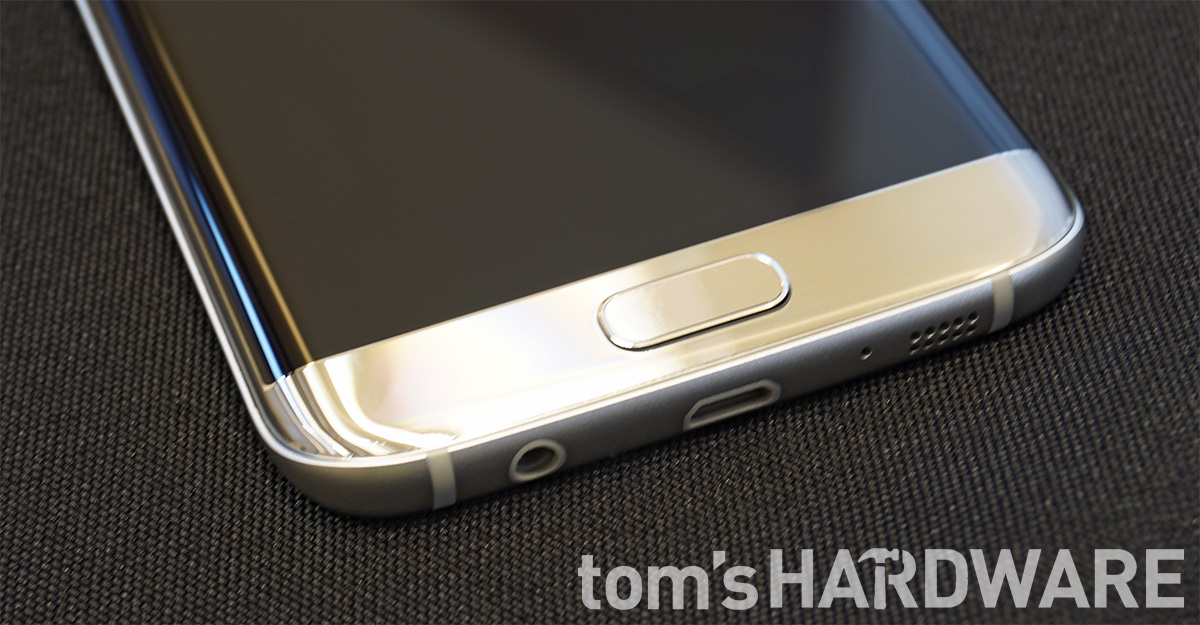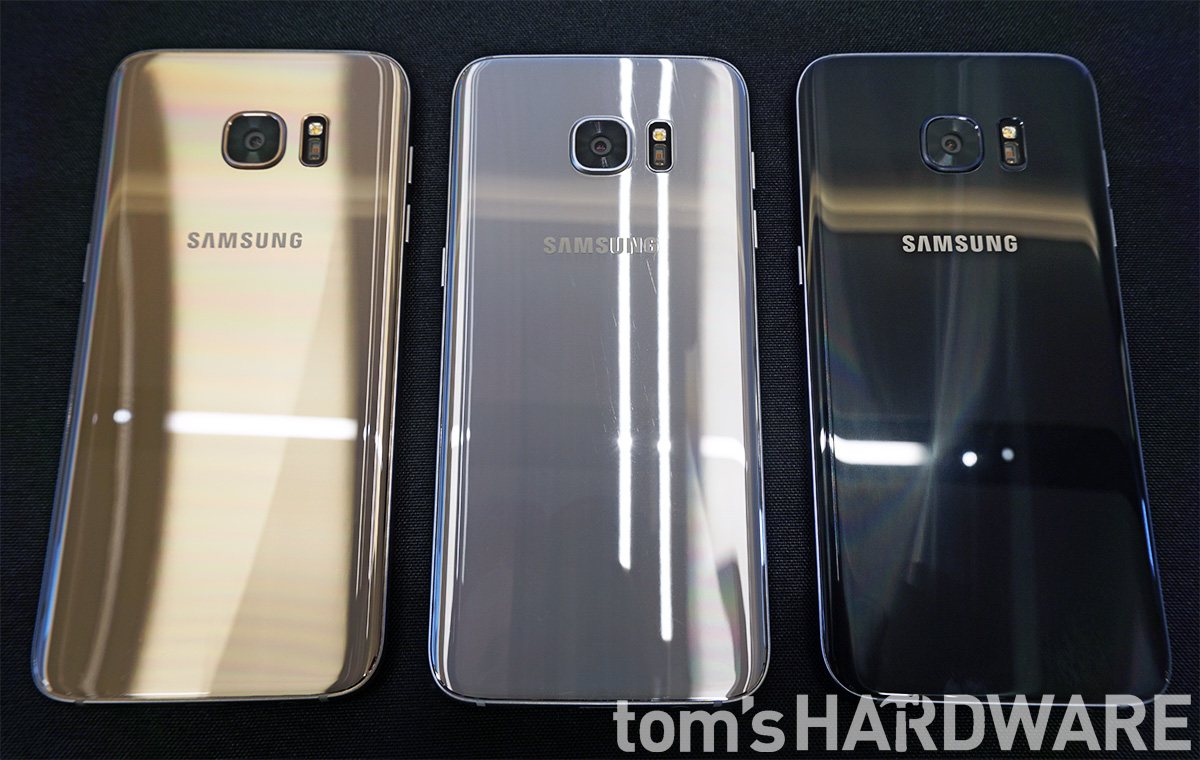Samsung Galaxy S7 And S7 Edge Preview
Design
The new Galaxy S7 devices retain the design language and materials from the previous generation, but do include a few small refinements. The edges of the lightly-textured aluminum frame are chamfered and polished, and sheets of Corning Gorilla Glass 4 still cover the front and back. Samsung’s iconic pill-shaped home button, with integrated touch-based fingerprint sensor, still sits below the screen, flanked by capacitive, backlit buttons. One subtle difference is the lack of chrome accents around the home button and speaker grille on the front and around the camera components on the back; these accents now take on the same color as the phone, helping these parts blend into the body.
Just like last year, the seventh generation arrives with two different models. Both use SAMOLED QHD resolution screens that differ in size: The Galaxy S7 comes with a 5.1-inch screen like the S6, while the larger Galaxy S7 edge comes with a 5.5-inch screen similar to the S6 edge+. Like its name implies, the edge’s screen curves around both sides, with similarly curved bevels above and below the screen too. While we have not tested these new screens yet, Samsung’s previous generation displays were excellent, with good viewing angles, peak brightness values above 600 nits when using Auto mode outdoors, and sufficient resolution to overcome PenTile’s lower subpixel density. The new S7s, like previous Galaxy devices, also offer different display modes, including Basic, which is an accurate sRGB mode; Cinema and Photo, which use an extended color gamut to provide bright, saturated colors; and Adaptive, which adjusts display parameters based on the content that’s being viewed.
One of the complaints we had about both the Galaxy S6 edge and S6 edge+ was that their curved screens and flat backs made the phones difficult to pick up and also made the sides feel a bit sharp in our hands. By curving the edges on the back too, like it did with the Galaxy Note5, the new S7s are much easier to handle and more comfortable to hold.
Both of the S7s are slightly smaller than the models they replace, thanks to reduced bezels around the screens. The Galaxy S7 shrinks by about 1mm in height and width, while the S7 edge is about 3.5mm smaller in both dimensions. Thickness increases slightly to make room for the larger batteries, a more than acceptable trade off in our opinion considering the extra bulk is barely noticeable. The extra thickness also reduces the height of the rear camera plateau; it's still not flush with the back, but it's not much more than a raised ridge now.
A 3.5mm headphone jack, a mono speaker, and a microphone are still located on the bottom edge. It’s a bit of a surprise to see a microUSB 2.0 port instead of the new USB Type-C variety. Most flagship devices should be switching to the new reversible plug this year, which only makes this port feel even more dated. Sticking with microUSB does maintain compatibility with Gear VR, however.
The new phones bring a selection of new colors. In the U.S., the Galaxy S7 is available in Black Onyx and Gold Platinum, while the S7 edge is available in Black Onyx, Gold Platinum, and Silver Titanium. Both the gold and silver colors have a shiny, reflective finish.
Get Tom's Hardware's best news and in-depth reviews, straight to your inbox.
-
Nashten Glad to see that Samsung brought the MicroSD card slot back.Reply
I still won't buy a Samsung phone, but they look even better. I can't wait to see what the SD820 holds in store for us when more products hit the street with it.
I shouldn't talk about SD slots though considering I own a Nexus 6... :D -
xHDx What staggers me is how does a Phone manage to use that much RAM? Windows uses a max of 2/2.5Reply
-
Edwin Herdman The "(sensors with) smaller pixels are bad" line is a myth, and I'm disappointed to see it spread here. There are densely packed sensors, and there are physically large sensors - both are good things.Reply
Of course, if you had the exact same pixel count, larger pixels are naturally better, but this is not the question facing sensor makers. The "small pixels" line is harmful because it leads people to think that small pixels are naturally compared to large pixels - almost nobody does this, because it would mean viewing pixels off different size sensors at the same size. With a few exceptions, people compare the full images at the same size - where total sensor size is much more important.
DP Review's Richard Butler took a look at this question last year, with some extra math details on page 2 of the article "The effect of pixel size on noise." -
Calvin Huang Reply17541248 said:Micro-usb 2.0...
Come on!! Really?
I have a phone with USB-C (Nexus 6P), and while I do appreciate the ergonomics of the new plug (it both feels more secure while being less awkward to insert/unplug), the lack of compatibility is a huge drawback. I have to be sure to always carry my own cables with me, and there are no wireless charging dongles that use USB-C. So if you go to Starbucks and want to make use of their Qi charging pads, you're SOL. Granted, it'd be less of an issue if the device had Qi charging built-in, but in the case of the S7, it still doesn't make sense to release a phone that isn't compatible with their VR hardware. -
thezooloomaster ReplyMicro-usb 2.0...
Come on!! Really?
Who uses USB on phones for anything other than charging these days, anyway? -
none12345 Removing the MicroSD slot, and the waterproofiting from the s5 were 2 big mistakes. Glad to see they realized their stupidity and added them back in for the s7.Reply
I wouldn't even consider a phone that doesn't have a microsd slot.(or whatever replaces it in the future). The non-removable battery sucks, but its far easier to live with when the waterproofiting and microsd slot are back in. -
MasterMace USB 2.0 and a locked down battery are big signals for me to stay away from Samsung, still. That, and my experience with the GS4Reply -
giovanni86 Still concealing the battery. There almost back to normal. if there note 6 doesn't have battery removal its another year im skipping my Note 4 is plenty.Reply
